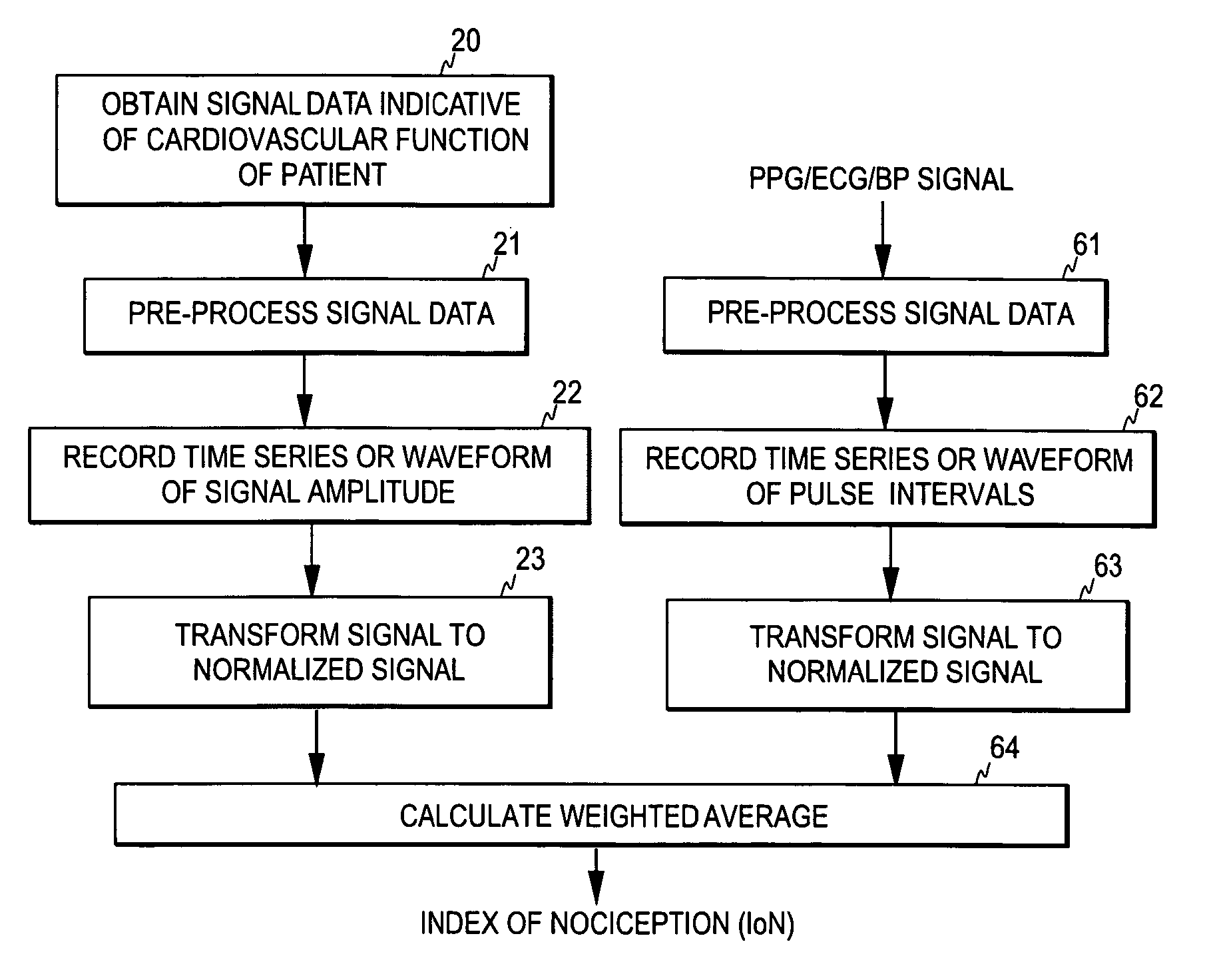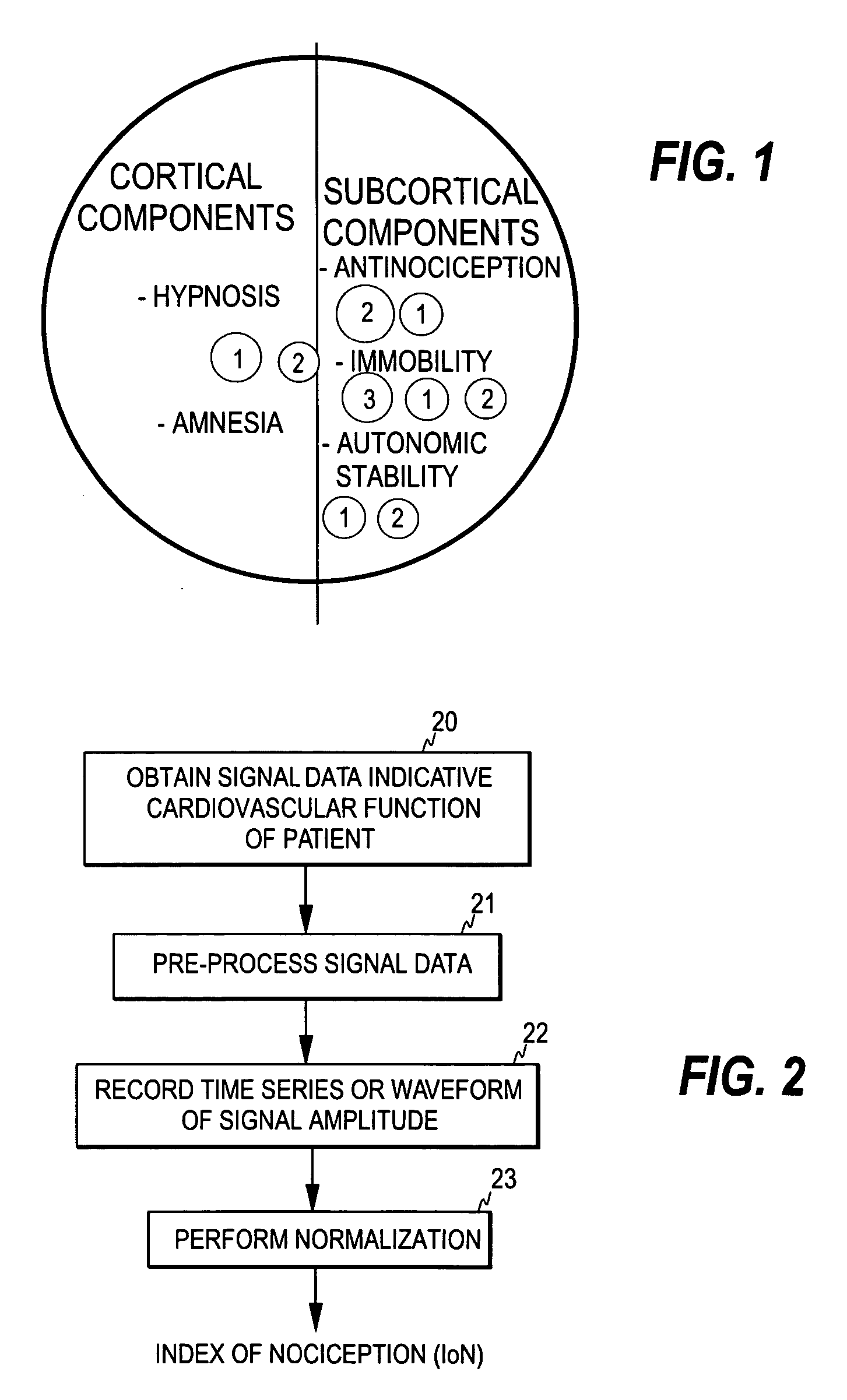Determination of the clinical state of a subject
a clinical state and subject technology, applied in the field of subject clinical state determination, can solve the problems of increasing blood pressure, heart rate and adrenal secretions, assessing or measuring the suppression of subcortical activity, and the integrity of subcortical evaluations is far more unsatisfactory, and no commercial device exists for this purpos
- Summary
- Abstract
- Description
- Claims
- Application Information
AI Technical Summary
Benefits of technology
Problems solved by technology
Method used
Image
Examples
Embodiment Construction
[0049] Below, the invention is described more closely by referring first to embodiments pertaining to the determination of the antinociceptive component of anesthesia in a patient.
[0050]FIG. 1 illustrates the concept of the quality of anesthesia. According to the current comprehension, the quality of anesthesia includes five different components: hypnosis (i.e. unconsciousness), amnesia, antinociception, immobility, and the stability of the ANS. The first two components, the hypnosis and amnesia, are of cortical origin and are indicative of cortical activities and processes. The suppression of the cortical activity is obtained by drugs, which typically affect neural signaling globally in the brain. The drugs may activate the natural inhibitory GABA (gamma-aminobutyric acid) receptor system in the brains or prevent, by an unknown mechanism, neural signaling in the synapses between the neurons. For this reason, the drugs often also affect other parts than the cortex in the brain, the...
PUM
 Login to View More
Login to View More Abstract
Description
Claims
Application Information
 Login to View More
Login to View More - R&D
- Intellectual Property
- Life Sciences
- Materials
- Tech Scout
- Unparalleled Data Quality
- Higher Quality Content
- 60% Fewer Hallucinations
Browse by: Latest US Patents, China's latest patents, Technical Efficacy Thesaurus, Application Domain, Technology Topic, Popular Technical Reports.
© 2025 PatSnap. All rights reserved.Legal|Privacy policy|Modern Slavery Act Transparency Statement|Sitemap|About US| Contact US: help@patsnap.com



